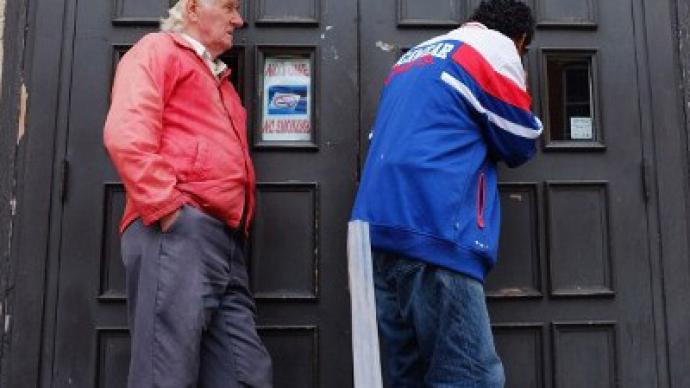Class war coming to America

Never mind the budding war between America and Iran. A skirmish could be coming a lot closer to home and it might even be as centrally located as your own city. In only two years, tensions have grown greatly between the upper and lower classes.
The results from a recent survey out of the Pew Research Center reveal that 66 percent of the adults studied believe that there are either “very strong” or “strong” conflicts existing between America’s elite and impoverished, a statistic that has skyrocketed in recent years. Between 2009 and 20011, the proportion of those that sense conflicts exist as such between the class groups grew by 19 percentage points. While less than half of Americans fearing a fight brewing at the dawn of the Obama administration, today two-out-of-three Americans feel that there is a strong conflict between both extremes of society.The growing inequality among the distribution of wealth in America has been a focal point of the ongoing Occupy Wall Street movement. Next week the group will stage a protest in front of the Capitol Building in DC to demonstrate against, among other things, the corporate corruption between big business and Washington. Aside from the relationship between the Capitol Building and the banks, though, the incredible amount of inequality in America today can be seen everywhere. As the rich get richer and the poor get poorer, tensions tighten within the US. While a buffer zone of the middle class once bridged a gap between the extremes of the spectrum and allowed the less fortunate an obtainable goal to strive for, earlier statistics published in 2011 reveal that even the middle class is evaporating in America. Between 1970 and 2010, the number of Americans who live in middle-income neighborhoods shrank from 65 percent down to 44. While some were fortunate enough to move into higher ranks of society, the study conducted by Stanford University found that the many moving to an ever-expanding lower-class. “The bottom fifth in the US looks very different from the bottom fifth in other countries,” researcher Scott Winship of the Brookings Institution told the National Review recently. “Poor Americans have to work their way up from a lower floor.”"They don't feel any ability to move up. They feel stuck and don't feel there's a lottery ticket to take them to a higher class," former George W Bush strategist Matthew Dowd added to ABC.And while the elite one percent can claim to make salaries in the excess of hundreds of thousands of dollars annually, 20.5 million Americans — or 6.7 percent — have incomes that leave them to be grouped below half of the official poverty line. In Washington, DC, one-in-ten are grouped to be among the poorest of the poor.President Obama has addressed the worsening issue, but has seemingly done little to correct the epidemic. Even after the administration boasted that they managed to lower the number of unemployment benefit claims the last two months, the supposed victory was short-lived. On Thursday this week, the US Department of Labor revealed that claims were back up to their highest in six weeks. Only last month the president told an audience in Kansas, "Now, this kind of inequality – a level that we haven't seen since the Great Depression – hurts us all.” With a year left until his administration either starts anew or is forced from the White House, he has proven so far that his policies have only worsened conditions for millions of unfortunate Americans while allowing the the most lavish lobbyists, politicians and corporate bigwigs to bring in billions. "I am not angry at rich people I am angry at the people who manipulate the system,” Kevin Smith, 51, adds to CNN. Smith’s anger, many will attest, is directed accordingly. The system in question allowed the one percent to see a near 300 percent surge in income between 1979 and 2007.As statistics suggest that tensions tighten, the news does not necessarily come as a shocker to any. Income segregation has been rampant in metropolitan areas of late, an earlier Stanford University study showed. Harvard University sociologist William J. Wilson explained to the New York Times in November that “More affluent citizens lives fundamentally different from the middle- and lower-income groups,” which in turn, he said, creates a divide that “decreases a sense of community.”In the latest polling from Pew, the statistics show that the numbers are indeed pointing towards the truth. According to the survey, 46 percent of the 2,048 adults questioned believe that the wealthy only got that way “because they know the right people or were born into wealthy families.” With an assumption that a strong or very strong conflict exists increasing in only two years time, at this rate 85 percent of Americans would sense a class war in two years’ time.














